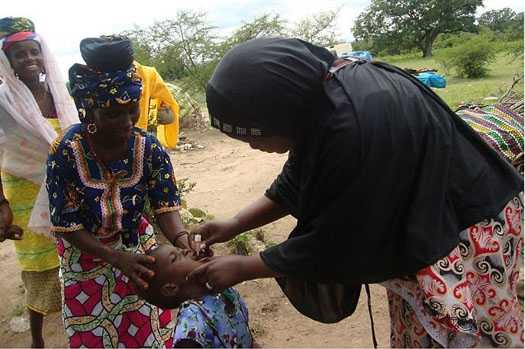Using AMD methods to track polio
The AMD program, which began in 2014, represents a significant leap forward for CDC’s advanced sequencing and bioinformatics capabilities. Prior to receiving AMD funding, CDC incorporated genetic sequencing methods in some infectious disease outbreak responses. This “AMD in Action” story about CDC’s pre-AMD funded work foreshadows the more robust and far-reaching effort launched in 2014—an escalated attack on infectious disease outbreaks that is proving to be better, quicker, and cheaper.

In 1988, the World Health Assembly adopted a resolution for the worldwide eradication of polio. It marked the launch of the Global Polio Eradication Initiative (GPEI), spearheaded by national governments, CDC, Rotary International, WHO, and UNICEF, with substantial support from the Bill & Melinda Gates Foundation.

In 1988, the World Health Assembly resolved to eradicate polio worldwide. But the wily virus evolves 10 million times faster than bacteria. And it is reemerging in the Horn of Africa, Cameroon, and Syria, confounding efforts to stop the spread. Not willing to let the virus get the upper hand, CDC scientists have been continually revising laboratory methods for more than a decade to keep pace with the virus. As a result of CDC’s sharing technological innovations and training with laboratories around the world, when polio broke out in the Horn of Africa in 2013, laboratory technicians in Kenya quickly identified the source as a wild virus. They immediately sent specimens to CDC. Overnight, CDC scientists sequenced the virus and identified it as coming from Nigeria—on the other side of the continent.
With a clear understanding of the pathway the virus had followed, health officials were able to respond faster and know exactly where to target their energies.
In the spring 2014 outbreak in Syria, sequencing a wider window helped scientists pinpoint the time of introduction into the region, because polio has an identifiable molecular clock. Scientists know how quickly the virus changes and can use Advanced Molecular Detection (AMD) methods to explore the inner-workings of the polio virus to show them where it started and where it went.
Since the early 2000’s, CDC has shortened the timeline from outbreak to detection by more than half. Previous methods took more than a week to confirm an isolate as poliovirus; now, scientists can identify a strain in an afternoon. But the agency isn’t stopping there. Although scientists know exactly where to look for changes in the RNA of the virus, CDC is working to sequence larger segments. Because poliovirus changes so rapidly, that broader range of information will tell health officials where the virus originated and what direction it has moved. And those data can be sent immediately to public health workers in the areas where disease is occurring so they can focus their response.
- Page last reviewed: August 17, 2015
- Page last updated: August 17, 2015
- Content source:
- Centers for Disease Control and Prevention
- Page maintained by: Office of Associate Director of Communication, Division of Public Affairs


 ShareCompartir
ShareCompartir